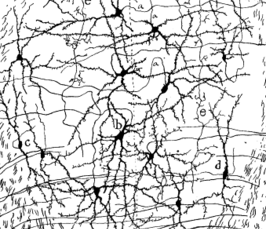Brain circuits involved in novel antidepressant strategies
Tuesday Seminar
- Date: Mar 15, 2016
- Time: 03:00 PM - 04:00 PM (Local Time Germany)
- Speaker: Francesc Artigas
- Professor and Chair, Department of Neurochemistry and Neuropharmacology Institut d'Investigacions Biomèdiques de Barcelona
- Location: Max Planck Institute of Psychiatry
- Room: Lecture Hall
- Host: Alon Chen

Major depressive disorder (MDD) is a severe psychiatric syndrome with very high prevalence and - socioeconomic impact. Despite extensive research, its pathophysiology is poorly understood. Monoamine-based antidepressant drugs (AD) have slow onset of action and limited efficacy in MDD patients. Preclinical studies reveal that ADs trigger a series of slow adaptive mechanisms, presumably involved in the clinical response to AD. However several observations indicate that the human brain can rapidly switch from depressive to euthymic states (and viceversa) suggesting that the suboptimal effects of current AD are limitations associated to the current monoamine targets. Given the strong homeostasis of 5-HT ad NA neurons, a way to improve AD action is to prevent self-inhibitory mechanisms mediated by auto- and heteroreceptors. This strategy was used in the past with non-selective 5-HT1A antagonists (e.g., pindolol) and has been incorporated by new AD drugs such as vilazodone or vortioxetine.
Several novel observations in recent years have shaken the antidepressant field, by showing that some depressed patients with severe treatment resistance can rapidly experience clinical remission. Hence, deep brain stimulation (DBS) of the ventral anterior cingulate cortex (Cg25) evokes rapid mood improvements in treatment-resistant patients. On the other hand, single intravenous administration of the non-competitive N-methyl.D.aspartate (NMDA) receptor antagonist ketamine evoked rapid and long-lasting (e.g., 1 wk) antidepressant responses in treatment-resistant patients. Likewise, new molecular strategies aimed at modulating gene expression in serotonin neurons show great potential in the antidepressant field. In particular, RNAi strategies have been shown to evoke rapid and effective antidepressant-like effects in mice by knocking-down the serotonin transporter (SERT) or the 5-HT1A autoreceptor after intranasal administration. The lecture will review these novel strategies due to their potential impact in the identification of new targets and the further development of new antidepressant drugs.